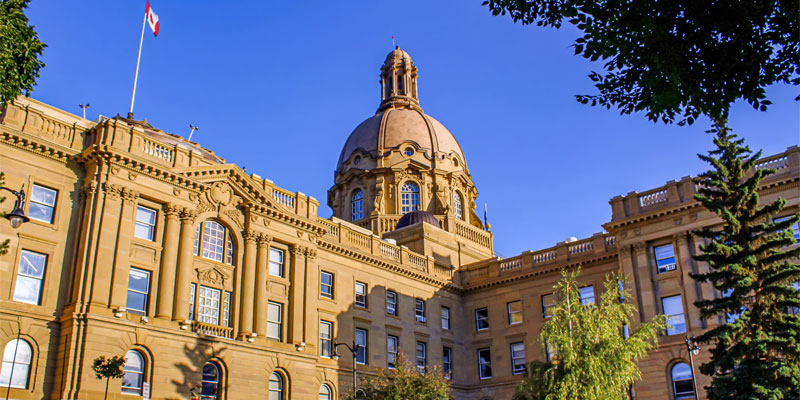Kenney government must reduce spending to right fiscal ship

Alberta’s government finances are in trouble. In its fiscal update last week, the Kenney government forecasted a historic deficit of $21.3 billion in 2020/21, with sizable deficits over the following two years. In total, the province will see a cumulative budget deficit of $46.7 billion over the three-year projection. Once the COVID crisis subsides, the government must develop a clear course of action to address Alberta’s pressing fiscal challenges.
First, a bit of background.
The COVID recession and low oil prices have accelerated a trend over the last 15 years where Alberta’s fiscal situation has deteriorated, primarily due to persistent deficits. As a result, the province moved from a net financial asset position of $35.0 billion (2007/08) to a net debt (total debt minus financial assets) position of $27.5 billion (2018/19), pre-COVID. Now, net debt will reach a projected $90.1 billion (or roughly $20,100 per Albertan) by the end of this government’s fiscal term (2022/23).
Consequently, interest payments on the government’s debt will cost Albertans an estimated $3.0 billion by the end of the fiscal plan; that’s money that will be unavailable for important priorities such as health care, education or pro-growth tax relief.
The trajectory of debt-interest payments is particularly worrying. Even with today’s historically low interest rates, the rising debt burden is translating into higher debt-interest costs. As recently as 2009/10, Alberta’s government interest payments were trivial. They’re now projected to consume more than six per cent of all government revenue in 2022/23.
And if interest rates rise, the cost of servicing the debt will increase over time. Several recent credit downgrades already reflect a risk in increasing the cost of further borrowing.
The Kenney government cannot wait and hope for high resource revenue to paper over the province’s fiscal troubles. This is a risky and unreliable strategy even in the best of times, because resource revenues are notoriously volatile and hard to predict. Instead, as this crisis passes, the government must plot a reliable path forward to budget balance—one that does not rely on an influx of resource revenue.
To start shrinking the deficit, the Kenney government should look for savings on the spending side of the ledger. Alberta has become a high spender in recent years compared to other large provinces. Consider that in 2000/01, Alberta’s per-person spending was slightly lower than British Columbia’s. Since then, much faster spending growth in Alberta has drastically changed the situation. Nominal per-person government program spending increased by 110.8 per cent in Alberta between 2000/01 and 2018/19 compared to 68.9 per cent in B.C.
Today, Alberta spends more than each of the other large provinces. In 2018/19, Alberta spent $12,622 per-person, about $1,400 more than Quebec and approximately $2,000 more than B.C. and Ontario. Notably, Alberta’s higher spending has not translated to better services in many areas. Finding ways to get better value for money will be essential to restoring the province’s long-term fiscal health.
The Kenney government’s latest fiscal update paints a grim picture for Alberta finances. Returning to budget balance post-pandemic will be a crucial first step in restoring the province’s fiscal health. And that must be done through spending reductions rather than waiting and hoping for another oil boom.


